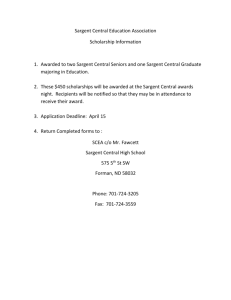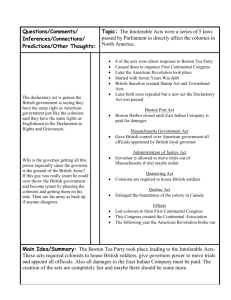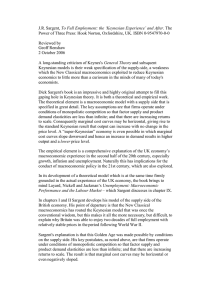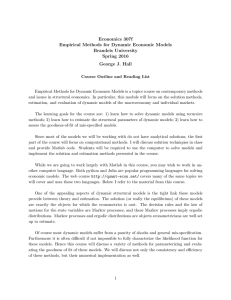Heros of the Revolution Presentations
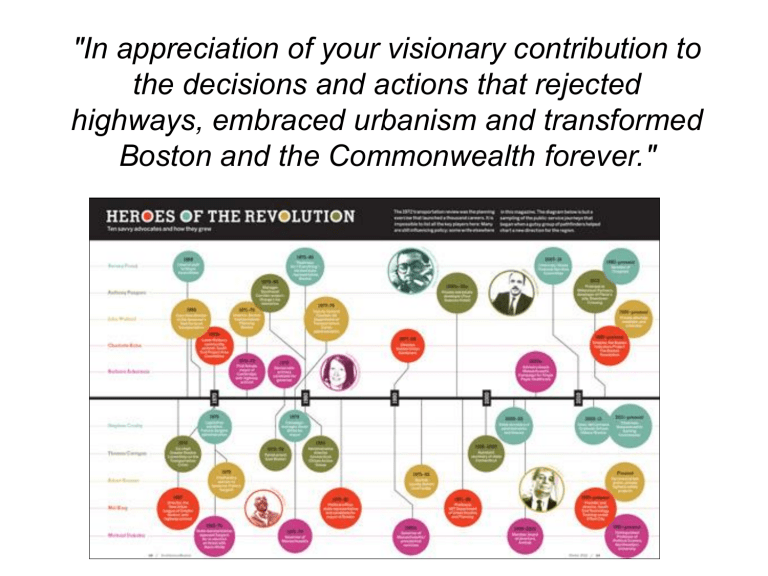
"In appreciation of your visionary contribution to the decisions and actions that rejected highways, embraced urbanism and transformed
Boston and the Commonwealth forever."
Governor Francis W. Sargent
Governor of
Massachusetts whose visionary move to stop the highways Michael
Dukakis once called “the bravest decision ever made’’
Accepting is his son, the environmental writer
Bill Sargent
Alan Altshuler
From professor to Task
Force chair to Secretary of Transportation under
Frank Sargent, he helped pass the federal law that allowed highway money to be used for public transit
Al Kramer
Policy advisor to
Governor Sargent, who advocated within the administration for community opponents to the highways, he was sometimes referred to as the
Barney Frank of the
Sargent administration
Cong. Barney Frank
Chief of staff to Boston mayor Kevin White, who advocated for community opponents to the highways, he was sometimes referred to as the Al
Kramer of the White administration
John “Jack” Wofford
Executive director of
Governor Sargent’s Task
Force on Transportation and the godfather of the Boston
Transportation Planning
Review
Stephen Crosby
From organizer to advisor to both Frank
Sargent and Kevin
White, one-time political rivals, thus beginning his long bipartisan career
Mel King
Politician, scholar and activist who, as director of the New Urban
League of Greater
Boston, organized his community to fight the highway
Ann Hershfang
Member of the Tubman
Area Planning Council that fought the South
End Bypass road and later co-founder of the pedestrian advocacy group WalkBoston
Father Thomas Corrigan
Co-chair of the Greater
Boston Committee on the Transportation
Crisis, he graduated from Jamaica Plain’s anti-highway movement to East
Boston’s anti-airport movement
Charlotte Kahn
A Lower Roxbury community activist who started Boston
Urban Gardens and helped beautify the
Southwest Corridor
Governor Michael S. Dukakis
Even as a state representative from Brookline, he preferred the
T to driving
Fred Salvucci
Beginning in Kevin
White’s BRA and later transportation secretary under
Michael Dukakis, his contributions to transportation in
Massachusetts are immeasurable
Anthony Pangaro
Manager of the
Southwest Corridor project which relocated the Orange
Line and redeveloped the highway right of way into a 4 mile linear park
David Lee
Architect who helped co-ordinate the rebirth of the Southwest corridor and designed stations for the relocated Orange Line
